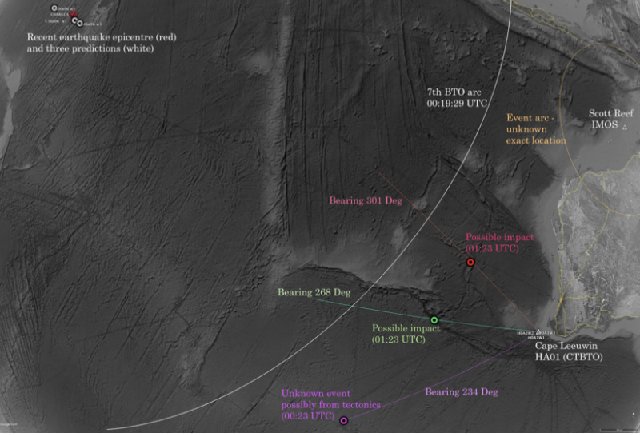"Acoustic Gravitational Wave Theory" may unravel the direction of Malaysia Airlines flight 370

On March 8, 2014, Malaysia Airlines flight 370 with passengers 239 passengers disappeared in the Indian Ocean three years ago. But not found a fuselage yet, except for a few debris. According to The Guardian, the authorities seem to have stopped searching earlier this year.
Information on the crash site, got a report providing a method that can be used to locate such a crash plane in the future. Applied mathematician Usama Kadri - Massachusetts Institute of Technology (MIT) and Cardiff University in the UK will use the Australian Traffic Safety Authority (ATSB) to provide a super-intolerable new method called acoustic gravity wave theory to analyze heavy bass sounds
Acoustic gravitational wave theory shows the possibility to discover an airframe from a special aspect of impulsive sound underwater. In this theory, observe how low-frequency sound waves pass through water, taking into consideration the effects of gravity and the shape of the ocean floor. When 370 flight collided with water, it seems that a vibration much faster than the sound speed in the air exceeding 3,000 miles (4,800 km / h) runs into the sea.
I would like to say that there is a way to find the object that gives the impact, rather than insisting on discovering the aircraft
Kadri analyzed the data with the underwater acoustic microphone "Hydrophone", after the satellite and 370 flights have finally handshaked by ping communication or after the satellite data finally captured the signals of the aircraft I searched for the signal I did. The acoustic gravitational wave theory makes it possible to measure the distance and direction of several sound waves. Most of the data collected by the research team was regarded as earthquake activity, but it seems that the fuel of 370 flights has run out, from the point off the Australian border outside the so-called seventh arc that helps narrow down the search of the aircraft The sound emitted can not be explained only by geological activity.

Kadri's crash point
This signal is a hint to locate 370 flights. Kadri thinks that we can narrow down the sound source to a radius of 100 km using data points, but there are still some points to watch out for. It takes about 1 hour from the last handshake to arrive at the signal, which means that the plane should have been flying for a while without ping communication to the satellite before it crashed.
In Australia Traffic Safety Administration, "These points are unfortunately inconsistent with the analysis results of satellite communication data and aircraft performance (durability and distance)", while Kadri's analysis said " "One of the materials that can contribute to the future efforts of the company" is to keep it.
Others, like Ali Abdolali, a researcher at the University of Delaware, think that Kadri's method is a reasonable way to determine impact.
He distinguished the difference between earthquakes and other acoustic gravitational wave source and found a signal whose source was unknown. I think there is a possibility that it is an airframe
Mr. Abdolali further points out that "the result should not be judged to be true and detailed modeling of the ocean floor is necessary to locate the exact point."
Research needs to head towards numerical models. Place the airplane on the surface and move the model. Even large supercomputers will take a considerable amount of time
Either way, the search is over and we are not on the way to exploring the deep sea of 5,000 feet (1,500 meters) at these points. "I do not want to get joyful when I think of the heart of the bereaved family," Kadri holds a prudent attitude.
The method based on the acoustic gravitational wave theory is adjusted, the better seabed model becomes available, and I would like to expect it to be put to practical use in the near future.
